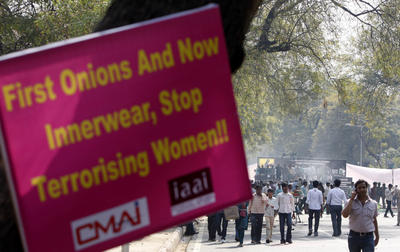And, if this happens, the possibility of numbers going wrong is high.
Though the Finance Minister has rightly emphasised the need to bring fiscal consolidation back on track, the target of GDP 4.6 per cent fiscal deficit is ambitious. Achieving this would mostly depend on tax buoyancy, disinvestment and subsidy reduction. While the former depends directly on growth momentum, the latter two are not so certain. Pegging subsidies at less than last year’s budgeted amount is probably unrealistic given the rise in international petroleum prices, the expected food security bill and rising fertiliser prices. Though direct cash transfer mechanisms will need a few years to implement, the mode of subsidies are the same and the subsidy amount is not likely to go down.
The most striking element of the budget is the Finance Minister’s indifference to measures curbing rising inflation. Withdrawing subsidies on major necessary items and not reducing excise duty and customs duty on crude oil and petroleum products is a concern. The government is bound to increase the price of petroleum products at regular intervals escalating inflation. Iff the minister succeeds in cutting subsidies, there will be inflationary pressures all around again, neutralising the positive impact of fiscal consolidation on inflation. Though improving the services sector tax base is good, it might contribute to inflationary pressures in the immediate future.
The minister has taken several steps to boost agriculture growth including increasing agricultural credit to farmers, augmenting storage capacity and cold chains, setting up ‘mega food’ parks, and removing production and distribution bottlenecks on major food items. But success in controlling food inflation depends much on the implementation and delivery of such systems, and they will further remain insufficient for boosting agricultural growth in the immediate future.
If growth is to remain at 9 per cent, savings and investment have to return to the pre-crisis level of 2007–08. But there is still quite a distance between the pre-crisis period and present level when it comes to investment. The investment support from foreign savings on a continuous basis (given the current account deficit) is also undesirable, especially due to the risk from volatile components.
Given perceptions about the business environment — inflationary pressure, tight monetary policy, global uncertainty and rising oil prices — domestic investment may not increase as expected. Both domestic and foreign investors have already reacted to the present business environment through a slowdown in FDI inflows (also approvals) in major sectors such as real estate, construction, power and telecom (outward FDI is also now more than inward FDI).
It was expected that the 2011–12 budget would not only announce bold reform measures but also design blueprints to attract FDI, particularly in manufacturing. And although the finance minister has promised to improve the share of manufacturing from 16 to 25 per cent, important to creating employment opportunities, there is no clear road map other than a promise to formulate a national manufacturing policy. Like last time, the minister is still saying that talks are underway for furthering FDI reforms.
The fast growth of India’s economy in recent years has placed increasing stress on what was already problematic infrastructure, such as electricity, railways, roads, ports, airports, irrigation, urban and rural water supply, and sanitation. Infrastructure development in these critical sectors is a must for creating a better investment climate and sustaining high growth rates. The 2011–12 budget has underscored infrastructure development. But the 23.3 per cent higher allocation of funds to infrastructure and the issuance of tax free bonds to the tune of Rp 297 billion (USD$6.6 billion) is a small effort toward bridging the huge supply–demand gap in the infrastructure sector. Not only is the sector in need of budget allocation, but also substantive reforms relating to tariff policy, fiscal incentives, private sector participation, public–private partnership and land acquisition — all which remain unaddressed.
With a backdrop of low investor confidence, India needs a big bang of reform-oriented budgets, with focus on major infrastructure sectors, FDI in retail and insurance, rationalising labour laws, the manufacturing sector, and improving the productivity of agriculture. But alas it seems the latest budget is giving an account of earnings and spending without any focus on real issues affecting the growth prospects of India’s economy.
Also lacking in the budget is any emphasis on social sectors and equity. And the budget remains silent on the important issues for industry, land acquisition and environmental clearances. While the finance minister’s attempt at inclusive growth, by focusing on health and education, is the right move, the budget could have done much better. One can only hope that delivery systems and implementation are better.
Pravakar Sahoo is Associate Professor at the Institute of Economic Growth, Delhi. A version of this article was first published in The Hindu Business Line on 4 March 2011.

